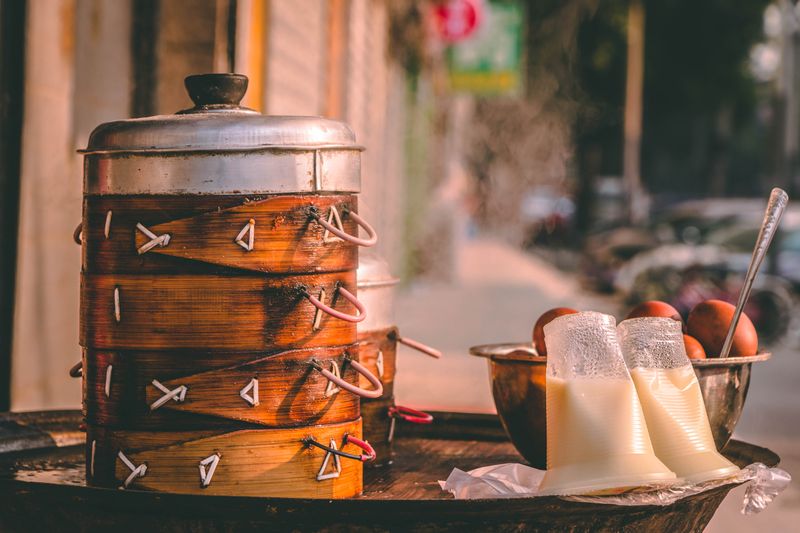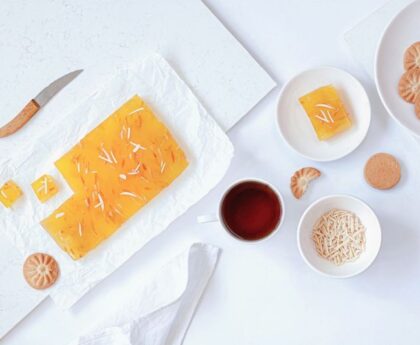Understanding Pani Puri: A Celebrated Street Food
Introduction
Pani Puri, also known as fucha, phuchka, gupchup, and golgappa in various regions, is an iconic Indian street food. Today, Google is celebrating this beloved snack with a special Google Doodle game. This article will delve into the origins and variations of Pani Puri, the significance of its celebration, and how to play the Google Doodle game.
Origins and Variations
Pani Puri consists of a deep-fried crisp flatbread shell, known as puri, which is stuffed with a flavorful mixture of potatoes, chickpeas, spices, or chillies. The distinguishing feature of this snack is the flavored waters, known as imli pani, which are poured into the puri to create an explosion of flavors in each bite.
Pani Puri has several regional variations across India. In Maharashtra and Andhra Pradesh, it is called Pani Puri and commonly filled with boiled chickpeas, a white pea mixture, and sprouts, all immersed in tangy and spicy pani. In the northern Indian states of Punjab, Jammu and Kashmir, and New Delhi, the snack is known as gol gappe or gol gappa, with the puri filled with a mixture of potato and chickpeas and submerged in jaljeera-flavored water.
In West Bengal and parts of Bihar and Jharkhand, it goes by the names puchkas or fuchkas, and tamarind pulp is a primary flavoring for this variant. These regional variations add to the rich culinary landscape of India, showcasing the diverse tastes and preferences of different regions.
The Legend Behind Pani Puri
The origins of Pani Puri can be traced back to the Sanskrit epic, the Mahabharata. According to legend, Draupadi, a prominent character in the epic, was given the task by her mother-in-law to feed their family, who were living in exile with limited resources. Draupadi had only enough dough to create one puri, so instead of making a single large meal, she decided to make many smaller bites, thus creating the concept of Pani Puri.
Celebrating Pani Puri on Google
Today’s Google Doodle celebrates Pani Puri in honor of a significant achievement in its culinary history. On this date in 2015, Indore, Madhya Pradesh, witnessed a milestone as the restaurant Indori Zayka and Dainik Bhaskar achieved a Guinness World Record for serving the most flavors of Pani Puri – 51 options – under the guidance of chef Neha Shah. The Google Doodle not only pays homage to this record but also highlights the cultural significance of Pani Puri as a beloved street food in South Asia.
Playing the Google Doodle Game
The Google Doodle game is designed to resemble the popular game Candy Crush. Players are challenged to fulfill customers’ Pani Puri orders by clicking on the correct flavors. As each customer approaches the virtual food stall, the player must click on a specific number of each flavor, ensuring they are all next to each other. Failure to do so will result in the order being unsuccessful.
Players can choose between two gameplay modes – timed or relaxed. The timed mode adds an element of speed and excitement, while the relaxed mode allows players to enjoy the game at their own pace. The game is available on the Google Doodle website for enthusiasts to experience and enjoy.
Editorial: The Cultural Significance of Pani Puri
Pani Puri holds a significant place in Indian culture, both as a culinary delight and as a symbol of street food culture. It represents the vibrancy and diversity of Indian cuisine, showcasing the multitude of flavors that can be experienced within a single snack.
Street food, such as Pani Puri, serves as a democratic culinary experience, transcending socio-economic boundaries. It unites people from various backgrounds and walks of life, who can relish the flavors together on the streets of bustling cities or quiet town corners. Pani Puri, with its explosion of flavors and communal eating experience, has become an intrinsic part of the Indian culinary fabric.
The celebration of Pani Puri through a Google Doodle not only acknowledges its popularity but also highlights the cultural importance of street food in general. It serves as a reminder of the role street food plays in shaping a country’s cultural identity and connecting people through shared experiences.
Conclusion: Unleashing the Flavors of Pani Puri
Pani Puri, a delightful Indian street food, has gained recognition through the Google Doodle celebration. Its varied regional variations and the legend behind its creation provide fascinating insights into its origins and cultural significance.
The Google Doodle game offers enthusiasts a chance to engage with Pani Puri in a creative and interactive way. Whether through the timed mode, where speed and accuracy are essential, or the relaxed mode, allowing players to savor the experience, the game captures the essence of the experience of enjoying Pani Puri.
For those unfamiliar with Pani Puri, this celebration presents an opportunity to explore and discover a beloved street food that has captured the hearts and taste buds of people across South Asia. Whether enjoyed on the streets or through a Google Doodle game, Pani Puri promises an explosion of flavors and a truly memorable culinary experience.

<< photo by Semanur Biber >>
The image is for illustrative purposes only and does not depict the actual situation.
You might want to read !
- Exploring the Delectable Delights of Pani Puri: Unveiling the Secrets and Charms of the Beloved Indian Street Snack
- Editorial Exploration: Exploring the top Prime Day deals in the UK from Amazon, John Lewis, and other retailers in 2023.
Article Title: Uncovering the Ultimate Prime Day 2023 Deals in the UK: A Comprehensive Guide to Amazon, John Lewis, and More
- Tour Talk: A Deep Dive into Daniil Medvedev’s Fan Q&A Session
- The Rise of Nothing Phone: A Stunning Competitor to the iPhone
- BBC Salary List: Exploring Huw Edwards as the BBC’s Top Earner
- “Reflections on Rehabilitation: The Release of Ex-Manson Follower Leslie Van Houten after 53 Years”




